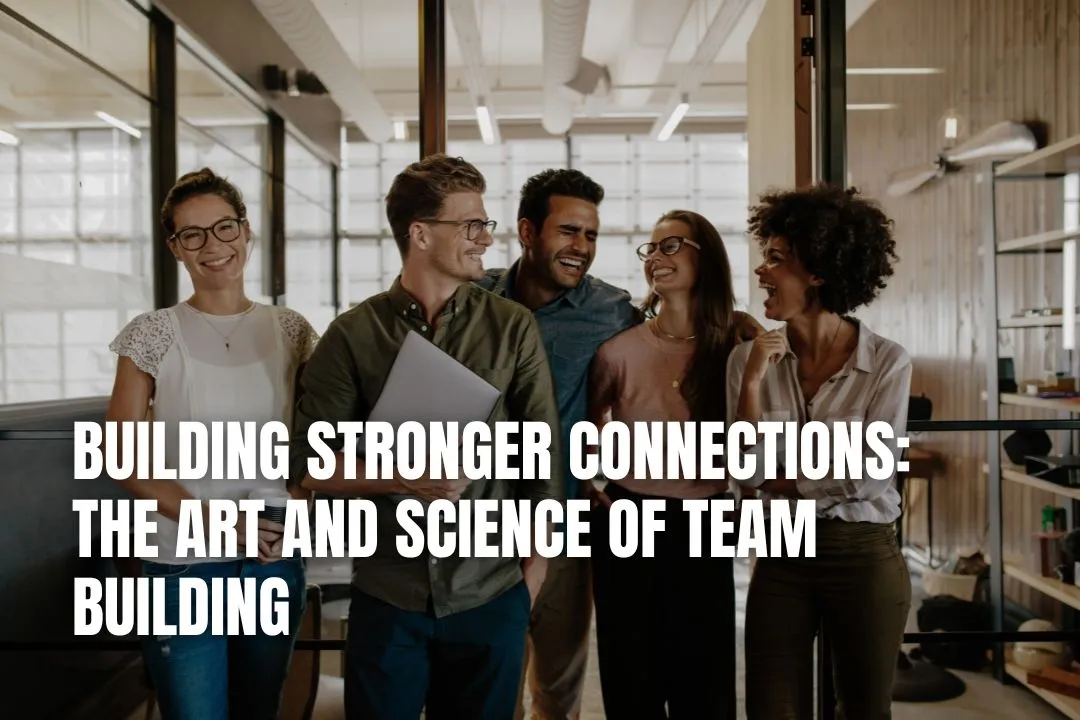
Editorial Disclaimer
This content is published for general information and editorial purposes only. It does not constitute financial, investment, or legal advice, nor should it be relied upon as such. Any mention of companies, platforms, or services does not imply endorsement or recommendation. We are not affiliated with, nor do we accept responsibility for, any third-party entities referenced. Financial markets and company circumstances can change rapidly. Readers should perform their own independent research and seek professional advice before making any financial or investment decisions.
Collaboration, innovation, and collective productivity depend heavily on teams working effectively together. Team building is the basis of teamwork, from individual talents to working cohesively as one unit, transforming teams into high-performance units that work in harmony together. Team building goes far beyond icebreakers and trust falls. Its aim should be building meaningful connections, improving communication channels, and creating an environment in which every member feels appreciated and respected.

Synergy, collaboration and unity are “it” words used frequently within corporate settings. But team building goes well beyond mere lip service. Effective teamwork leads to greater satisfaction, higher efficiency and innovative problem-solving. It builds trust among employees while creating an atmosphere of mutual respect. Doing these activities can contribute more to hit targets while keeping morale up and preventing burnout along the way.
Research consistently demonstrates the power of strong teams through team building activities. Psychologists assert that teams that form strong social ties outperform those without. There is a sense of psychological safety that allows team members to take risks without fear of embarrassment or reprisals from coworkers. Team building creates this protective shield allowing there to be collaboration freely and creatively among colleagues.
Clarity is very important to any team's success, since without an understanding of objectives and each person’s responsibilities, confusion can thwart any progress. Effective team-building activities should center around unifying members around shared goals while clearly outlining individual roles. This helps facilitate greater collaboration while speeding up productivity gains. Also, clear communication and role delineation empower people to work more confidently towards meeting team objectives more easily.
Many workplace conflicts and inefficiencies happen because of poor communication. Promoting effective dialogue through team-building exercises can significantly enhance workplace dynamics by encouraging active listening, constructive criticism, and open idea sharing. Which then creates the conditions necessary for improved collaboration. Whether it's through navigating brainstorm sessions or managing complex projects, effective communication serves as the glue that unifies the team efforts for smoother workflows and stronger professional relationships.
Trust takes time and consistent effort to cultivate, and authenticity is its foundation. Team-building activities that promote open and honest conversations play a big role in dismantling interpersonal barriers. Such activities create a safe space where team members can share their thoughts, challenges and goals without fear of reprisal from colleagues. When people feel heard and supported it creates a deeper sense of trust which ultimately strengthens collaboration while improving team dynamics for a more unified workplace experience. Authenticity remains very important in maintaining relationships that flourish on mutual respect and understanding.
Activities such as murder mystery games, escape rooms, strategy challenges or collaborative puzzles can be great ways for teams to build camaraderie while developing problem-solving skills and cultivating team spirit. That is why murder mysteries are great for team building, because they combine creativity, strategic thinking, and the excitement of solving an intricate challenge into one amazing activity. These activities create an engaging environment in which teams must collaborate under pressure, communicate effectively and deduce clues as a group. Such experiences build innovation and collaboration while giving participants the chance to bond over shared victories and obstacles. When they immerse themselves in an activity requiring critical thinking and teamwork, employees can strengthen connections and trust between themselves which ultimately translates into improved dynamics within the workplace.
Sometimes taking your team outside can work wonders. Outdoor adventures such as hiking, paintballing, or tackling obstacle courses offer unique experiences that push people outside their comfort zones and build bonds among members of the team, added UK Paintball, who are offering paintballing experiences across the UK. These activities encourage participants to rely on each other, teaching important skills like problem-solving, collaboration, and adaptability. No matter the goal, effective communication among team members is important for reaching their collective success. Such shared experiences not only build up individual growth, but they can also strengthen relationships among colleagues. These activities also build up trust and camaraderie among co-workers. Stepping outside or undertaking physical challenges offers unique perspectives and energy boosts that translate directly to better workplace dynamics. Creating an atmosphere free from routine, these adventures can form innovation and teamwork while making for unforgettable memories.
A structured approach to team development includes workshops focused on skill-building, personality assessments, or conflict resolution. These sessions aim to equip participants with practical tools while offering valuable personal insights. When you give attendees the opportunities to focus on specific areas of professional growth, workshops can provide them with opportunities to better understand themselves and their colleagues. This often results in breakthrough moments when participants gain greater insight into their strengths, challenges, and interpersonal dynamics. These breakthroughs not only increase personal performance but also form stronger, more cohesive team relationships. When carefully planned, workshops provide an environment conducive to collaborative learning and problem-solving that enables teams to address workplace challenges more efficiently.
Not everyone enjoys team building activities. Introverts may find group activities intimidating, while others might view it as tedious work. To get the most out of participation among diverse personalities and ensure meaningful participation without trust falls or awkward silences, you should design activities that cater specifically to them, but without anyone feeling left out.
A successful team-building session is only half the battle. Now comes the hard part of keeping enthusiasm alive and lessons learned fresh in people's minds. For lasting team cohesion to happen, regular check-ins, ongoing activities, and manager support must all play their part.
While team-building activities may seem like just for fun and games, their purpose goes deeper. A well-functioning team has direct effects on a company's bottom line by increasing efficiency, creativity, employee retention and employee morale. So investing in team building activities is an investment for both your employees and your business's long-term success.

Team building is both an art and a science. It involves understanding the unique dynamics of any given team while using practical strategies to build connection and trust among team members. A stronger team not only benefits an organization, its members also experience enhanced professional lives. Prioritizing meaningful interactions and collaboration, companies can build teams that not only work well together, but thrive together, which ultimately contributes to increased organizational productivity.
Team building is a crucial investment that goes beyond just having fun. It directly impacts a company's bottom line by boosting efficiency, sparking creativity, improving employee retention, and lifting overall morale, leading to a more productive and positive workplace.
A successful team-building event is built on three core elements: having clear goals and defined roles for everyone involved, fostering open and honest communication, and creating an environment where genuine trust can be built through authentic interactions.
There are many effective types of activities. You could try problem-solving challenges like escape rooms, get outside with adventures like hiking or obstacle courses, or organise structured workshops that focus on developing specific skills such as communication or conflict resolution.
A single event isn't enough. To ensure the positive effects continue, it's important to maintain momentum with regular check-ins, integrate ongoing team activities, and have consistent support from management to reinforce the lessons learned.
It's common for some people to be hesitant. The best approach is to design a variety of activities that appeal to different personalities, including introverts. This ensures everyone can participate in a way that feels comfortable and meaningful to them, rather than forced.
Collaboration, innovation, and collective productivity depend heavily on teams working effectively together. Team building is the basis of teamwork, from individual talents to working cohesively as one unit, transforming teams into high-performance units that work in harmony together. Team building goes far beyond icebreakers and trust falls. Its aim should be building meaningful connections, improving communication channels, and creating an environment in which every member feels appreciated and respected.